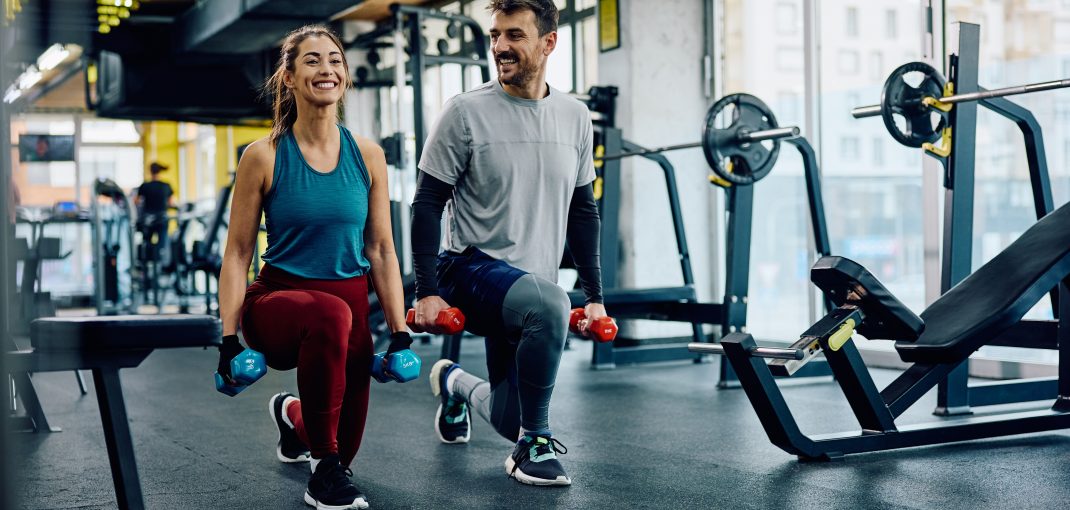Walking lunges are a powerful lower-body exercise that engages multiple muscle groups, improves balance, and enhances functional strength. Whether you’re a beginner or an advanced athlete, incorporating walking lunges into your routine can yield significant benefits. Let’s get to it and take a look at our walking lunges exercise tutorial.
Benefits of Walking Lunges
Walking lunges are a compound exercise that targets the quadriceps, hamstrings, glutes, and core while also challenging coordination and stability. Some of the key benefits include:
1. Improved Lower Body Strength
Walking lunges strengthen the quadriceps, hamstrings, and glutes, making them an excellent exercise for athletes and fitness enthusiasts looking to build leg power.
2. Better Balance and Coordination
Since walking lunges require stepping forward and maintaining stability, they help improve balance and coordination, which translates into better performance in sports and daily activities.
3. Enhanced Flexibility and Mobility
The dynamic movement of lunges stretches the hip flexors and promotes greater hip mobility, which is essential for maintaining overall flexibility.
4. Increased Core Engagement
To maintain proper posture during walking lunges, the core muscles are activated, contributing to better overall core strength and stability.
5. Functional Strength for Everyday Movements
Walking lunges mimic movements like walking up stairs or getting up from a seated position, making them a functional exercise that improves real-world strength.
6. Cardiovascular Benefits
Performing walking lunges in a sequence raises the heart rate and improves endurance, making them a great addition to high-intensity workouts.
Walking Lunges Tutorial
How to Perform Walking Lunges with Proper Form
Instructions:
- Stand upright with feet hip-width apart.
- Take a step forward with one leg, lowering your hips until both knees are bent at about a 90-degree angle.
- Ensure your front knee is directly above your ankle and does not extend past your toes.
- Push back to the starting position and switch legs.
Best Practices:
- Keep your torso upright and core tight.
- Take controlled steps.
- Keep your knees aligned.
- Start with bodyweight lunges and progress to weighted lunges for added difficulty.

Common Mistakes to Avoid
Even though walking lunges are effective, performing them incorrectly can lead to strain or injury. Here are the most common mistakes and how to correct them:
1. Leaning Too Far Forward
- Mistake: Hunching forward shifts excess pressure onto the front knee and lower back.
- Fix: Keep your chest up and shoulders back to maintain a neutral spine.
2. Taking Steps That Are Too Short or Too Long
- Mistake: A stride that’s too short limits the depth of the lunge, while one that’s too long strains the hips.
- Fix: Aim for a stride length that allows for a 90-degree bend in both knees.
3. Allowing the Front Knee to Go Past the Toes
- Mistake: If your knee extends too far forward, it increases strain on the knee joint.
- Fix: Ensure your front knee remains aligned with your ankle as you lower your body.
4. Not Engaging the Core
- Mistake: A relaxed core can lead to imbalance and poor posture.
- Fix: Keep your abdominal muscles engaged throughout the movement.
5. Rushing the Movement
- Mistake: Moving too quickly reduces muscle engagement and increases the risk of losing balance.
- Fix: Focus on slow, controlled steps to maximize benefits and prevent injury.
6. Letting the Back Knee Slam Into the Ground
- Mistake: Allowing the back knee to hit the floor can cause unnecessary impact and discomfort.
- Fix: Lower yourself gently and maintain control throughout the movement.
7. Ignoring Proper Foot Placement
- Mistake: Stepping too far to the side or inward can throw off balance and cause misalignment.
- Fix: Keep your feet in line with your hips and step straight ahead.
Variations of Walking Lunges
To keep your workouts engaging and target muscles differently, try these variations:
1. Reverse Lunges
Instead of stepping forward, step backward into a lunge position. This variation places more emphasis on the glutes and hamstrings. Click here to learn more about reverse walking lunges.
2. Dumbbell Box Reverse Lunges
3. Barbell Lunges








